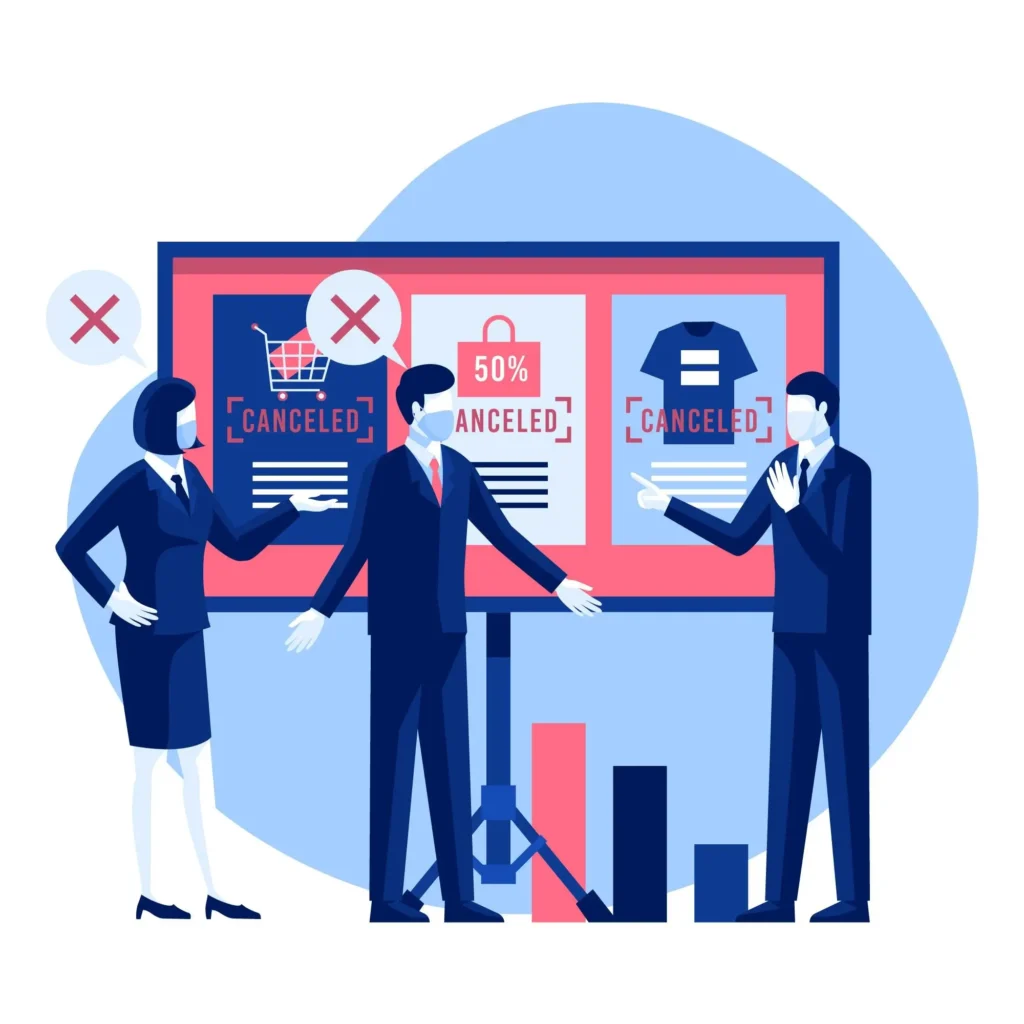The ability to effectively close deals is paramount to a company’s success. Mastering sales closing techniques can be the difference between a signed contract and a “maybe later.” It’s not about applying pressure or pushing for a close; it’s about building trust, understanding a prospect’s needs, and providing solutions that resonate with them.
What are Sales Closing Techniques?
Definition and purpose of a sales close
A sales close is the final and most important step in the steps to closing a sale, where interest transforms into commitment. This is the point where interest becomes investment. Unlike typical sales activities, such as discovery or pitching, closing is outcome-driven, with the goal of reaching an agreement that benefits both parties.
Effective closing techniques in sales involve recognizing readiness signals, overcoming last-minute doubts, and aligning the final offer with what your prospect truly values. When done correctly, you build trust, affirm the buyer’s decision, and open the door to long-term loyalty.
How do closing techniques differ in B2B and B2C?
Not all closing techniques are the same, especially in business-to-business (B2B) and business-to-consumer (B2C) sales environments. The differences between B2B and B2C closing sales techniques include the following:
B2B Sales Closes
B2B selling involves high-stakes transactions with multiple decision-makers, complex approval chains, and longer cycles. In this context, closing therefore requires:
- Strategic relationship building over a period of time
- A deep understanding of organizational pain points
- ROI-driven narratives to win stakeholder buy-in
- Patient and precision—pushing too early can backfire
The most commonly used B2B techniques include the Summary Close, the Soft Close, and, occasionally, the Columbo Close, which is used to draw attention back to unspoken benefits.
B2C Sales Closes
In contrast, B2C buyers’ decisions are driven by emotion, simplicity, and urgency, resulting in a shorter timeline. These buyers are seeking solutions that address their specific pain points. Successful B2C closes typically rely on:
- Clear and concise messaging
- Emphasis on limited-time offers
- Rapid response to objections
- Use of social proof and scarcity
Sales closing techniques, such as the Urgency Close, Assumptive Close, and the Now or Never Close, excel in the fast-paced B2C environment. These tactics help accelerate conversations with instinctive decision-making behavior.
Why closing techniques matter in the sales process
Applying the most appropriate closing techniques is crucial for the following reasons:
- Increased conversion rates: The right sales techniques can significantly boost your success rate.
- Shortened sales cycles: Efficient closing reduces time wasting and improves productivity.
- Enhanced customer relationships: Building trust with prospects lays the foundation for long-term partnerships.
Common challenges when closing sales and how to overcome them
Despite the advantages of closing tactics, sales professionals often encounter the following challenges:
- Indecision: Prospects may hesitate if they feel uncertain. Address this by reinforcing your value propositions and offering reassurance.
- Objections: Concerns about cost or integration can end a deal. Counter these with ROI-based responses, flexible payment options, or onboarding support.
- Lack of urgency: Without a compelling reason to act, prospects delay decisions. Implement time-sensitive offers to create urgency and drive action.
Overcoming challenges during the final steps to close a sale often requires empathy, strategic communication, and the appropriate closing technique—each of which we’ll explore in the next section.
10 Best Sales Closing Techniques (With Examples)
There’s no one-size-fits-all method when it comes to closing deals. The best way to close a sale depends on your buyer’s mindset, timing, and the specific situation. Below are 10 proven types of sales closes every sales professional should know—each designed to move prospects confidently toward a yes.

1. The Assumptive Close
The Assumptive Close technique involves acting as if the prospect has already decided to purchase, guiding the conversation towards finalizing details. This sales closing technique is effective for sellers who can accurately read the buyer’s cues and know how to close a deal with a client confidently.
Ideal use case: When the prospect has shown positive engagement and clear buying signals.
Application: “Let’s schedule the implementation for next week. Does Monday or Wednesday work better for you?”
Benefits: Encourages momentum and reduces decision fatigue by minimizing open-ended questions.
2. The Summary Close
The Summary Close technique summarizes and recaps the key benefits and agreements already discussed, reinforcing the value propositions before asking for the sale. It’s one of the most recommended sales closing strategies for reinforcing trust and clarity.
Ideal use case: When the prospect needs reassurance and a review of the product’s value.
Application: “To recap, our solution will increase your team’s efficiency by 30%, as well as integrate seamlessly with your current systems. We also provide 24/7 support. Shall we proceed with the agreement?”
Benefits: Reinforces the product’s value and aligns both parties on the benefits.
3. The Urgency Close
The Urgency Close technique introduces a time-sensitive element to encourage the prospect to take immediate action. It’s especially effective for sales professionals learning how to close sales more quickly without sounding aggressive.
Ideal use case: When a limited-time offer or an impending deadline is applicable.
Application: “This promotional pricing is only available until Thursday. Would you like to secure it today?”
Benefits: Creates a sense of urgency, prompting quicker and more informed decision-making.
4. The Question Close
The Question Close technique engages the prospect with questions that lead them towards a favorable decision. It’s a powerful move for reps refining their sales closing tips and learning how to guide conversations rather than control them.
Ideal use case: When your prospect is engaged but still hesitant.
Application: “What would it take for you to feel confident moving forward with this solution?”
Benefits: Encourages conversation and uncovers any remaining objections.
5. The Option Close
The Option Close offers your prospect a choice between two different opportunities, with both leading to a sale.
Ideal use case: When the prospect is indecisive.
Application: “Would you prefer the standard package or the premium package with additional features?”
Benefits: Empowers the prospect, making them feel in control, whilst guiding them toward a decision.
6. The Takeaway Close
This technique suggests that the offer or product may no longer be available, prompting the prospect to reconsider their options. It’s one of the more advanced sales closing techniques used to reignite interest without direct pressure.
Ideal use case: When the prospect is delaying or is indecisive.
Application: “Given your concerns, perhaps this isn’t the right time for this solution.”
Benefits: Leverages the fear of missing out, potentially reigniting the prospect’s interest.
7. The Sharp Angle Close
The Sharp Angle Close responds to the prospect’s request with a conditional agreement that leads to a sale.
Ideal use case: When your prospect asks for a concession.
Application: “If we can accommodate the feature, would you be ready to sign on today?”
Benefits: Turns a concession request into an opportunity to close the deal.
8. The Now or Never Close
The Now or Never Close emphasizes that the current offer is a one-time opportunity, invoking the fear of missing out.
Ideal use case: When a special deal or limited availability is in play.
Application: “This is the last unit at this price. Shall we proceed with the order?”
Benefits: Creates urgency and leverages scarcity to prompt action from the prospect.
9. The Columbo Close
This closing technique is named after the TV detective; it involves bringing up a critical point just as the meeting is concluding.
Ideal use case: When the prospect is about to walk away from the sale without making a decision.
Application: “Just one more thing–I forgot to mention that our service includes complimentary training sessions.”
Benefits: Re-engages the prospect and introduces additional value.
10. The Soft Close
The soft close gently suggests the next steps to your prospect without directly asking for the sale.
Ideal use case: Early in the sales process, or with cautious prospects.
Application: “Would it make sense to schedule a demo to explore this further?”
Benefits: Builds trust with the prospect and keeps the conversation moving forward without pressure.
How AI Sales Agents and Chatbots Help You Close More Deals

How AI chatbots help close more sales
AI chatbots help close more sales by recognizing buying signals and reinforcing best sales techniques automatically.
AI-powered chatbots provide 24/7 instant and personalized interactions with prospects. The best chatbots are designed to think, react, and nurture prospects, guiding them through the sales funnel.
Here’s how they can help your sales teams improve efficiency and master how to close more sales:
- Guide buyers towards the close: AI chatbots can recognize high-intent behaviour and guide conversations accordingly by qualifying leads, booking demos, and even nudging towards a decision. These automations support reps who are learning how to close a sales deal by surfacing the right moments to act.
- Handle objections instantly: Whether it’s pricing, ROI concerns, integration, AI chatbots can deliver fact-based, persuasive answers on the spot, before doubt has time to surface. This immediate objection handling is essential in mastering how to close a sale efficiently.
- Answer FAQs promptly: AI bots can handle the common questions prospects ask, freeing up your inbox and allowing your team to focus on high-value leads. This helps sales teams stay present with hot leads and focus on how to close a deal in sales without distractions.
Use of AI sales agents to boost sales closing
AI video agents like those from eSelf.ai do more than just answer FAQs; they sell. These hyper-realistic avatars simulate face-to-face interactions, replicating the presence, tone, and persuasion of your best reps.
How can eSelf.ai’s agents help your teams close more sales?
- Personalize every interaction: Just like any skilled representative would, AI adjusts its tone, script, and follow-ups dynamically using real-time behavioral signals. This tailored experience supports how to close a deal in sales by building trust and relevancy at each step.
- Reinforce proven sales tactics: eSelf.ai agents utilize techniques such as the Urgency close and the Summary close, embedding them directly into their dialogue flows. This enables them to address late-stage objections, summarize key benefits, and create a sense of urgency.
- Scale without sacrifice: Free up your human sales team by allowing a single AI agent to manage multiple conversations simultaneously—without compromising quality or missing opportunities of closing a sales deal at the right moment.
Real-World Example: A real estate firm integrated eSelf.ai’s AI agents into their sales process, leading to a 35% increase in lead engagement while significantly reducing response times. The implementation of AI agents allowed the estate firm to handle a higher volume of inquiries without compromising on effectiveness and personalization.
How to Choose the Right Closing Technique
Match the close the buyer’s personality and stage
It is crucial to understand your prospect’s personality and their current stage in the buyer’s journey. For example, analytical buyers prefer detailed information and may respond better to the Summary close, while decisive buyers look for efficiency and may respond better to the Now or Never Close.
By tailoring your approach, you align with the prospect’s decision-making style and expectations.
Understand your prospect’s pain points and needs
Being able to close often requires building a compelling case for purchase with your prospect. This is accomplished by effectively demonstrating how your solution addresses and alleviates their unique pain points.
Combine techniques for maximum effectiveness
Flexibility is vital. No single closing sales technique will succeed in every situation. By combining sales closing strategies such as starting with a Soft close and transitioning to an Open close, you can adapt to the dynamics of a sales conversation and increase the likelihood of achieving a successful outcome.
Sales Closing Skills and How to Improve Them
If you are looking to improve your sales closing skills, consider developing the following capabilities:
- Active listening: Understand your prospect’s needs and concerns by listening attentively during conversations.
- Emotional intelligence: Recognize and respond to emotional cues, helping you build rapport and trust.
- Confidence: Present your solution assertively, without coming across as aggressive or overbearing.
- Adaptability: Adjust your approach based on the prospect’s responses, behavior, and level of engagement.
Mistakes to Avoid When Closing a Sale

Pushing too hard or too soon
Overly aggressive tactics may alienate prospects. It’s essential to establish rapport and trust before attempting to close. Rushing the close can damage your credibility and the relationship.
Ignoring buying signals
Failing to recognize your prospects’ verbal or non-verbal cues can result in missed opportunities. Be patient, attentive, and ready to act when signs of readiness appear.
Not addressing objections fully
Superficially handling objections—or avoiding them altogether—leaves doubt unresolved. This risks breaking the rapport you’ve built. Take the time to understand and thoroughly address your prospect’s concerns to build confidence and momentum.
Overcomplicating the offer
Providing too much information or using technical jargon can leave your prospect confused. Keep your proposals clear, concise, and focused on value.
What to Do Next: Turn the Sales Closing Techniques into Results
Closing a sale isn’t about using the perfect script; it’s about understanding the psychology of a buyer, mastering your timing, and responding with authenticity. Regardless of your sales environment, those who succeed are able to adapt their approaches to meet the needs of each unique prospect.
While human intuition remains irreplaceable, digital tools can significantly scale your effectiveness and allow your sales team to focus on what they do best. Companies such as eSelf.ai provide AI-powered sales agents that embody proven closing techniques, offering 24/7 support, multilingual outreach, and the power of human-like dialogue at scale.
If your goal is to close more sales, reduce your sales cycle, and personalize every buyer interaction, then integrating closing techniques, alongside AI agents, is the fastest path to predictable revenue.
FAQs
What is the most effective sales closing technique?
There is no single best technique for closing a sale. It depends on factors such as the buyer and the context. However, the Summary Close is widely recommended for B2B sales to reinforce value.
How can I close a sale without being pushy?
Try the Soft Close or Option Close techniques. They offer direction without pressure, making your prospects feel in control while you gently guide them towards a decision.
What should I say to close a deal?
Focus on clarity and value. For example: “Based on what we have discussed, it sounds like this solution fits your needs. Shall we move forward with the next steps?”.
How can I overcome last-minute objections
To uncover the real reason for your prospect’s hesitation, try using the Question Close. You can then address the objections directly. Additionally, you can use the Columbo Close to reintroduce value that may have been overlooked.
How do you close a sales deal quickly?
Identify strong buying signals early, then use the Assumptive or Now or Never Close. Remember, speed often comes with confidence, not pressure.
What is the 3 yes technique in sales?
This approach builds momentum by securing three affirmative responses from the buyer before requesting the final commitment.
For example:
- Does this solve your pain point?
- Can you see how our product integrates well?
- Would this save you time?
What is the ABC method of sales?
ABC refers to “Always Be Closing,” a method that encourages sellers to guide every interaction with potential customers toward a sale. Modern Sellers interpret ABCs as “Always Be Consulting”, emphasizing value-driven conversations over pressure.
What are the 3 F’s in sales?
The 3 F’s help handle objections empathetically:
- Feel: “ I understand how you feel.”
- Felt: “Others have felt the same way.”
Found: “But what they found is that the solution helped them benefit.”


